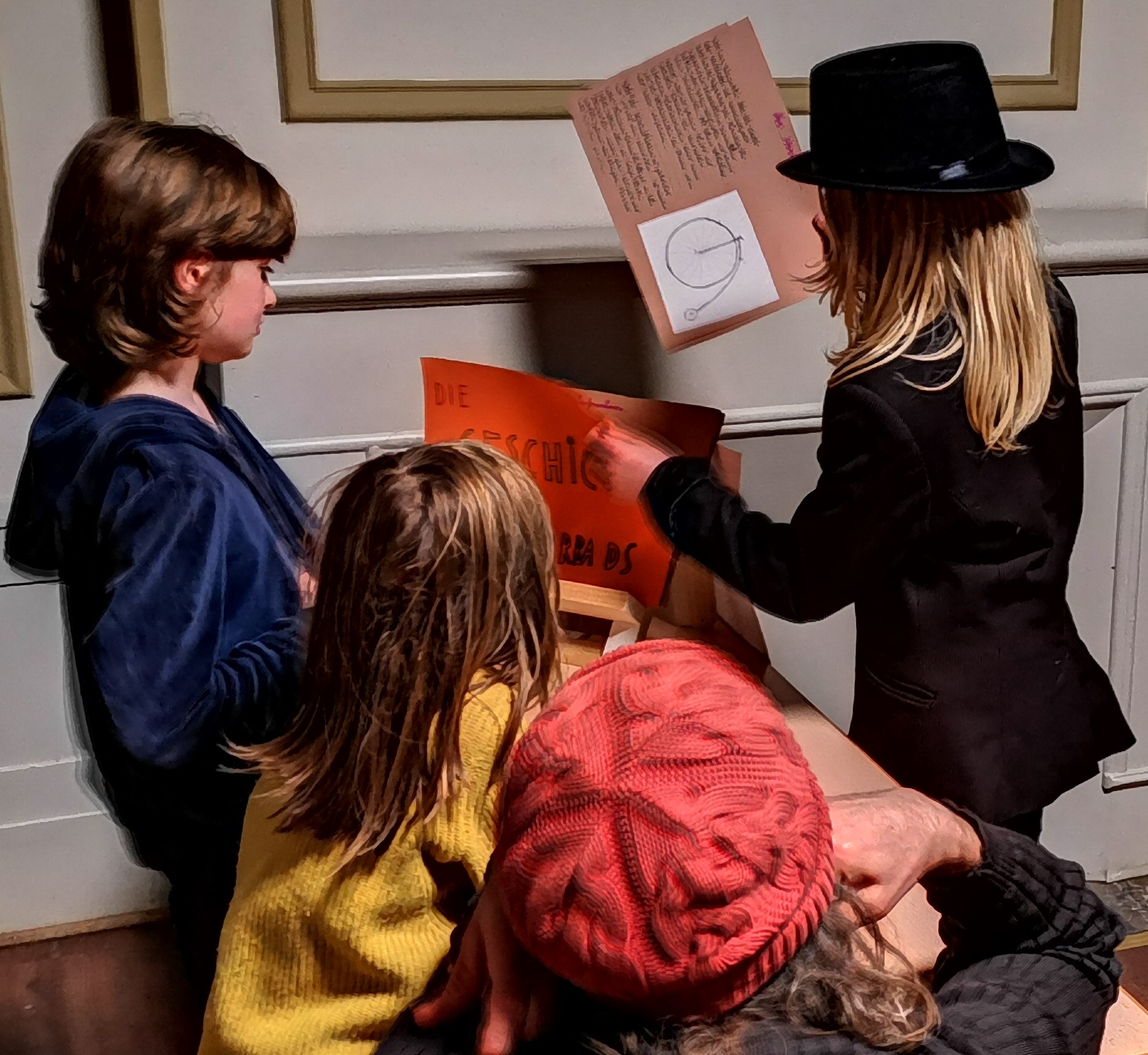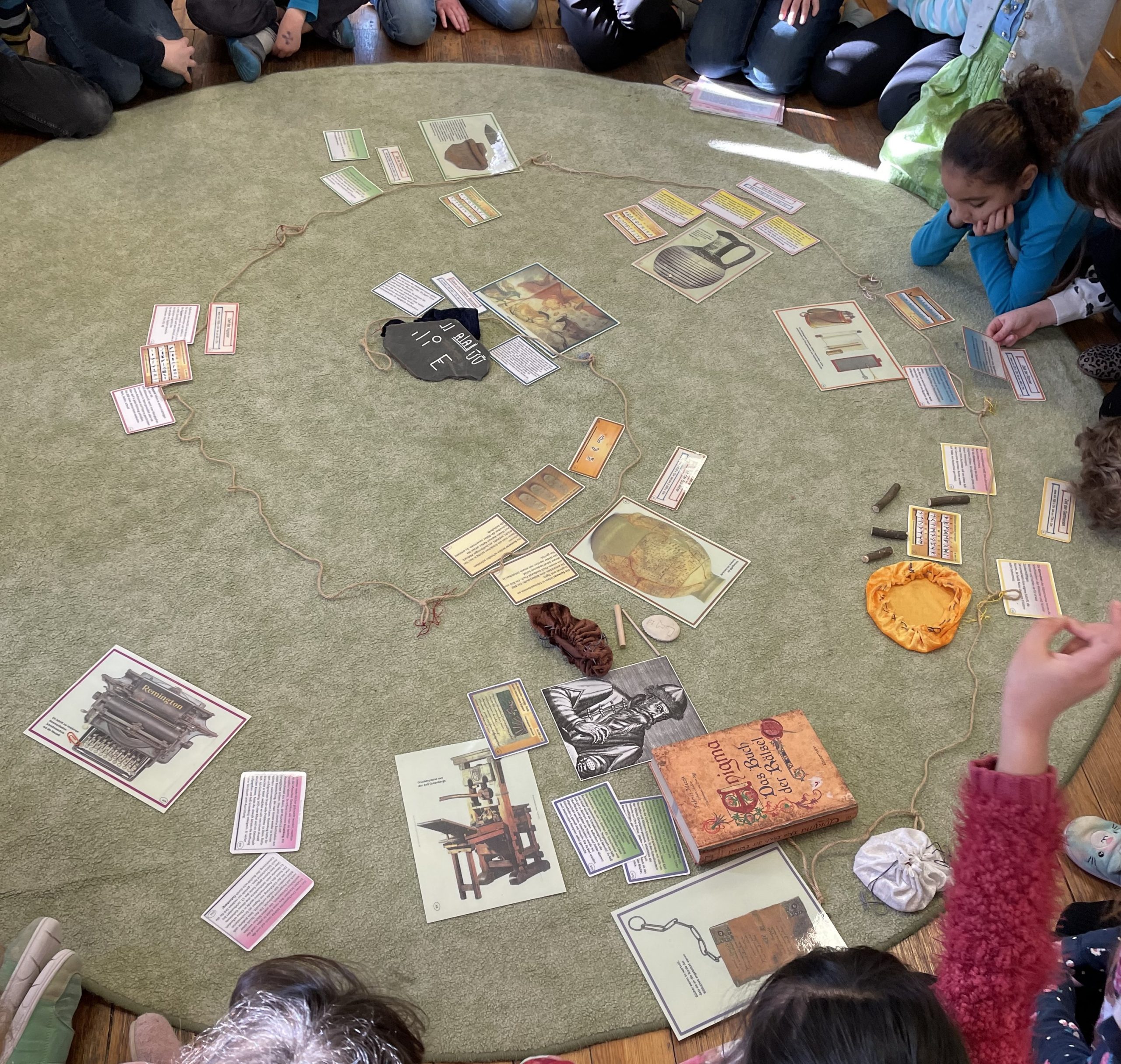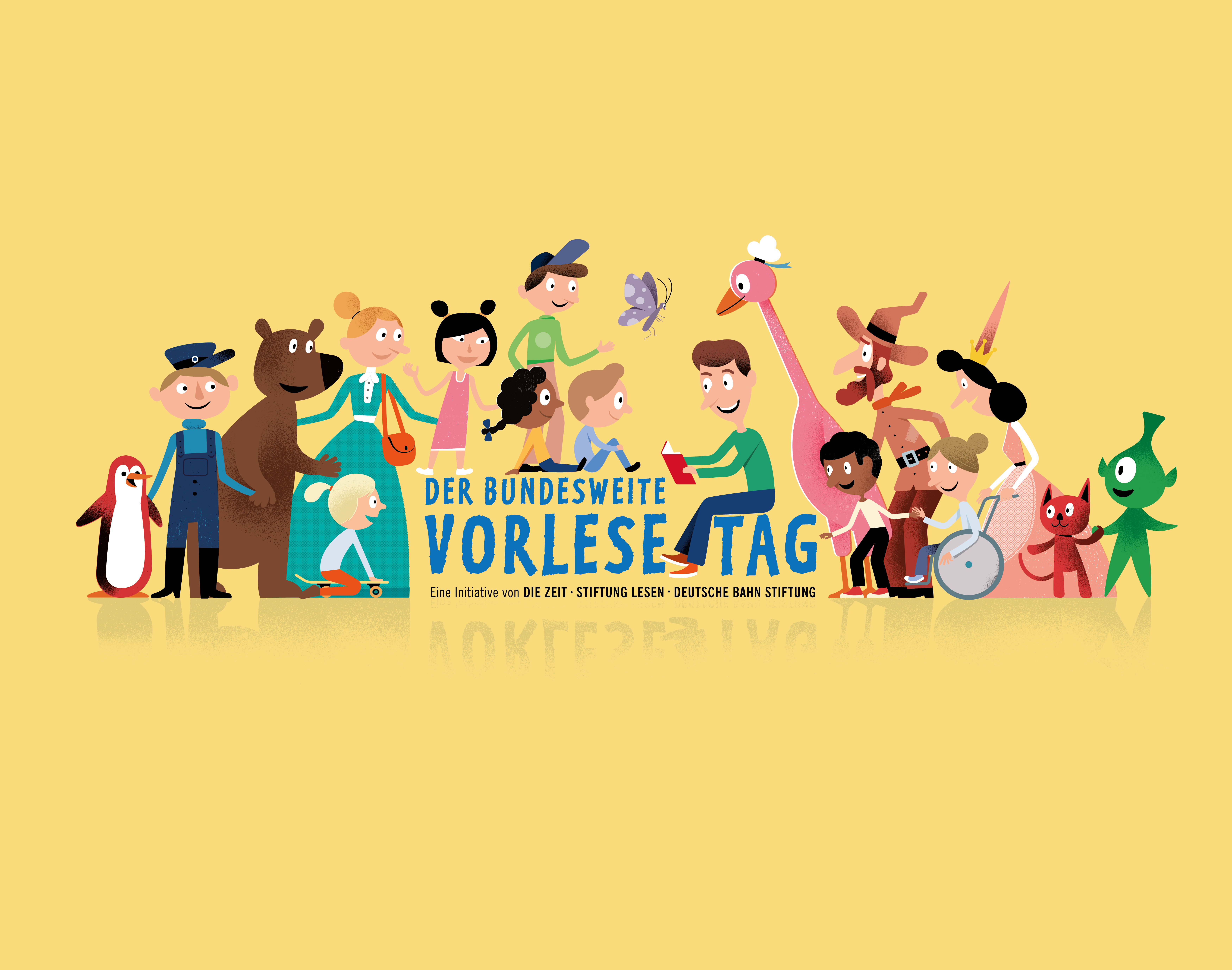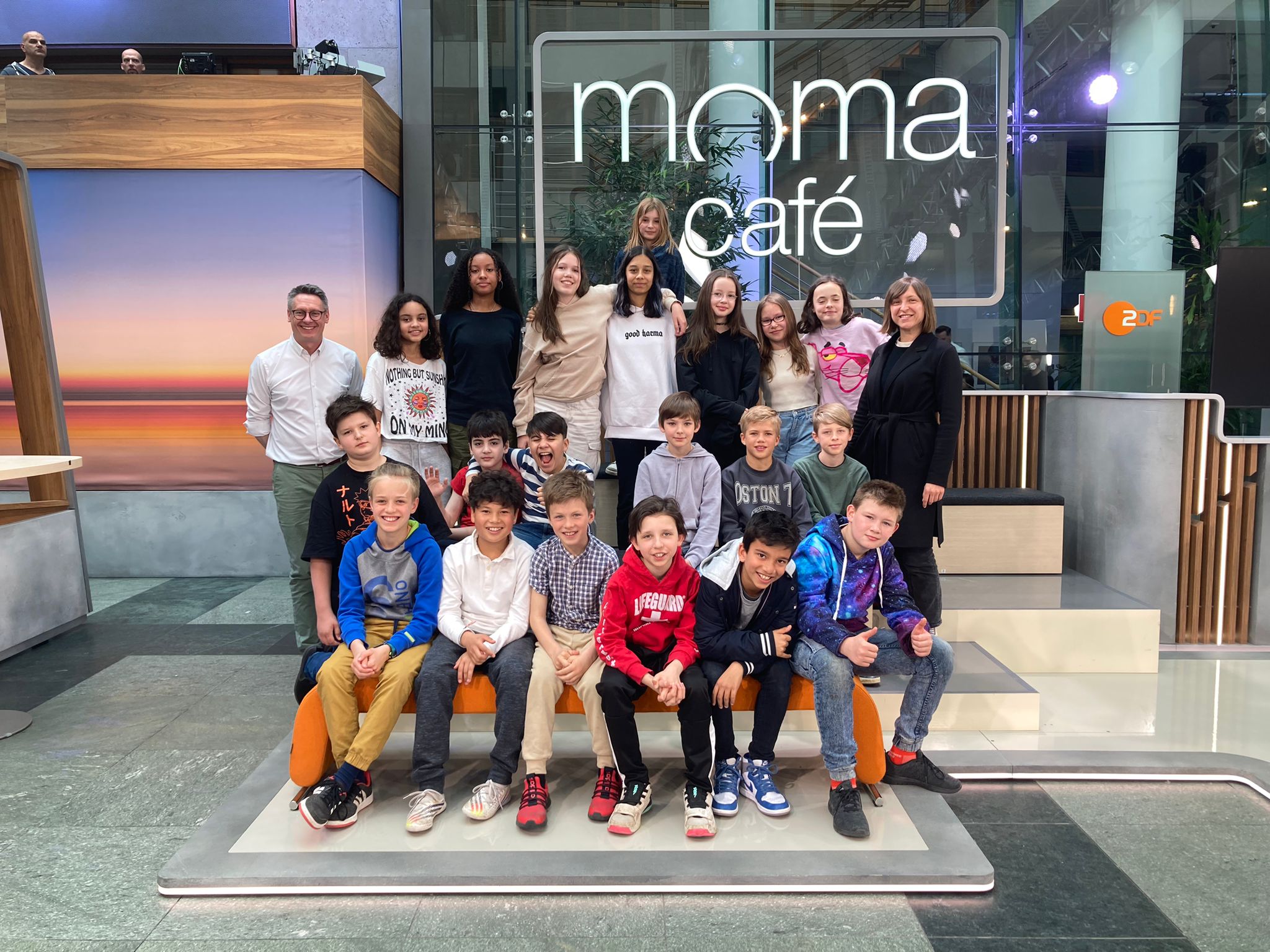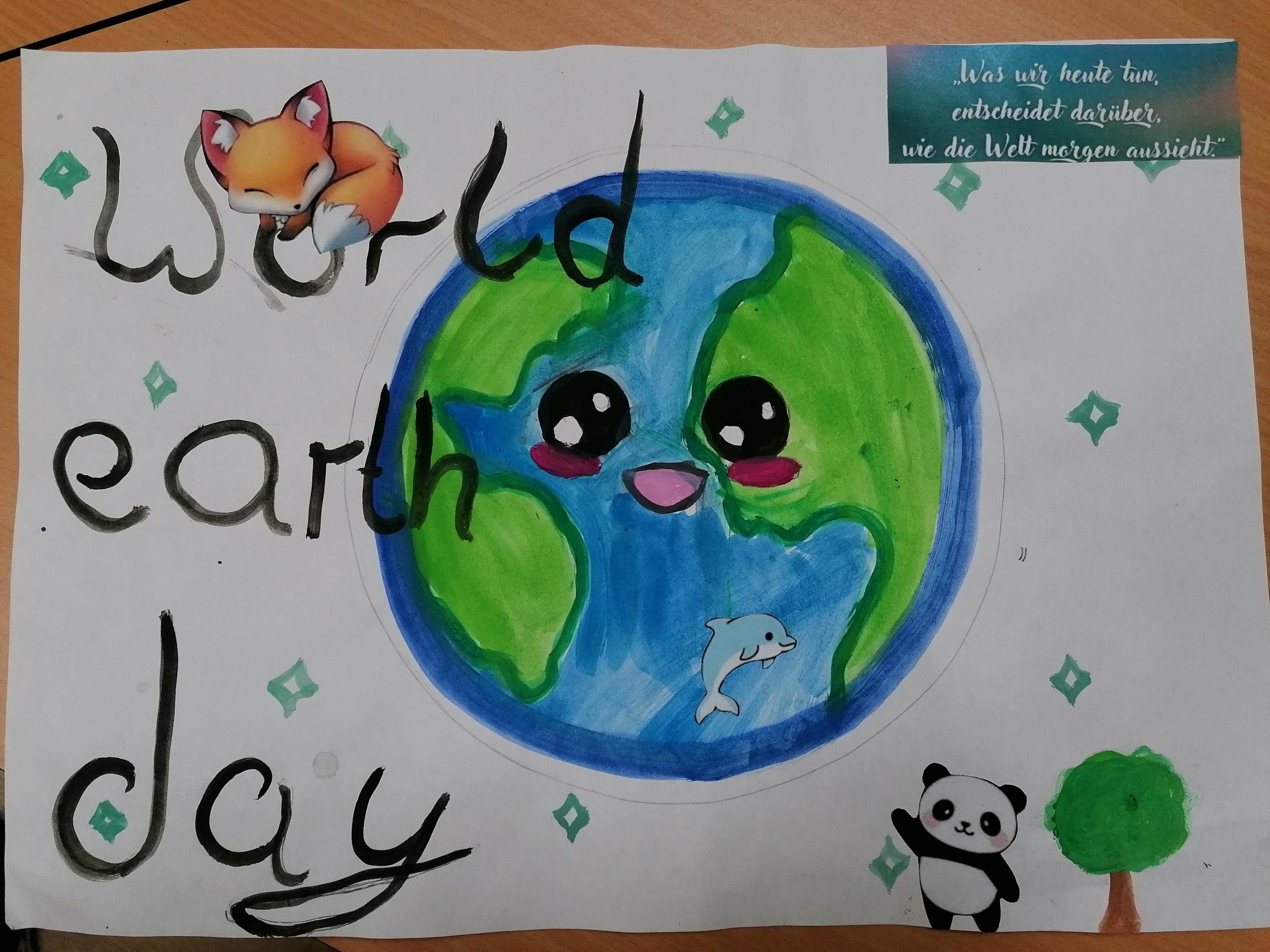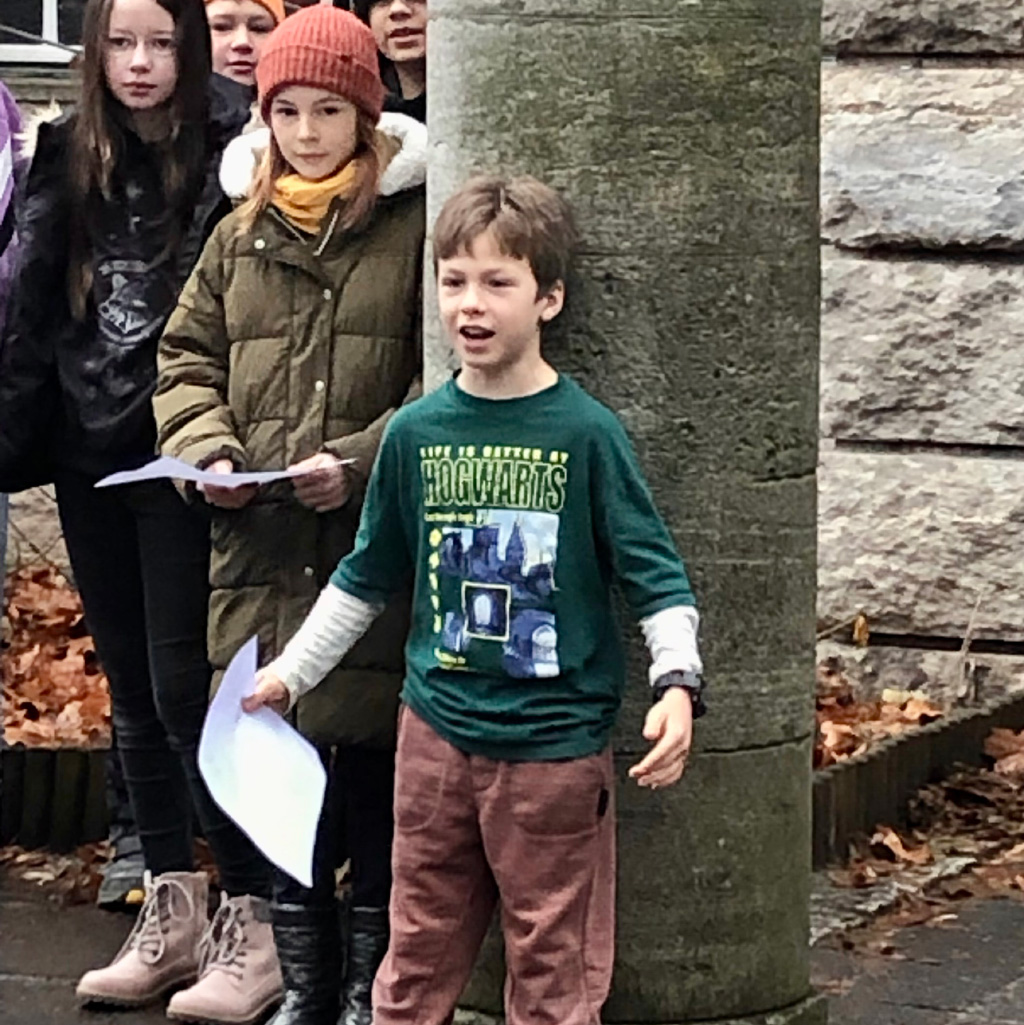Leonardo da Vinci, Baron Karl von Drais, Margarete Steiff, Bill Gates – on 27 September 2021, children and parents at IMS had the opportunity to meet some very famous people and learn about their lives and work. Pupils from years 5 and 6 slipped into the roles of famous inventors. Dressed in costumes, they stood by their own stands and held fascinating information about the life and inventions of their chosen inventor. In the interview, Mrs Gerstner, class teacher of learning groups 4 to 6, reports on the Inventors Fair at IMS.
What was the educational idea behind the fair?
At the Inventors Fair, two aspects of Montessori education become clear: storytelling and explorative, discovery learning. The children researched in detail and put in a lot of extra work. In the end, they were able to answer all questions about their favourite inventors. It was incredible how strongly they identified with their inventor. The children were completely free in their choice of people and could also change their minds – for example, if they realised that they had not chosen the right invention after all. I think that’s very important, because motivation grows when you research something that interests you. It was interesting that many children first chose an invention and then the inventor.
What also became clear: the aspect “Help me to do it myself”. It was very nice to see how the children took over themselves after a certain point and no longer needed me. I only gave input at the beginning and was of course there, listening and giving suggestions. But the rest was done by the children all by themselves. And that is the highest form of learning, when the child takes over. Because of the freedom of choice, it is something relevant for them to learn. They take over and go their own way – step by step. And they tend to take one more step than they have to. They were totally in the flow, I as a teacher did not have to guide them. That is exactly what Montessori education is!
How did the idea come about to organise an Inventors Fair at IMS?
I brought this idea with me from another international school where I learned a lot about experiential learning. Our Inventors Fair had its premiere in this form at our school. At IMS, the students decide for themselves when and how they learn. For the Inventors Fair, they now had to learn with a fixed date. From my point of view, it is important that pupils also get to know this situation – as preparation for secondary schools. Finishing and delivering a project gives the feeling of having achieved something at the end. Only then can the pupils be proud of themselves.
How did the pupils prepare for the Inventors Fair?
At the beginning, the students were given certain criteria to help them. The topic and the framework conditions were given, but the children were completely free to choose their own inventors. They had four weeks to research their inventors in the social sciences subject. The task also included preparing a poster for the exhibition stand, creating a model of the invention and dressing authentically. In addition, the children practised their presentations together in advance. As a teacher, I didn’t have to intervene at all: By presenting to each other, they saw where they stood and how the others did it. By working together, they automatically learned how to improve their presentations.
How did the fair go?
Working together, the children put on a great fair for younger students and for their families. Every single child prepared their part. With wigs, hats and other accessories, all the children cut a fine figure and portrayed their favourite inventors in fascinating performances. The requirement on the day of the fair was that the pupils should be dressed as authentically as possible so that they really looked like their inventor. At the individual stands, the audience could meet and greet the famous personalities and then learn about their lives and work. Using the model and the poster, they answered all the questions. The presentations were very special.
What exactly was special about the presentations?
During the fair, the little inventors stood at their stands. The big and small visitors could choose which stand they wanted to visit and which inventor they wanted to learn more about. The inventors then presented themselves mainly in one-on-one meetings. This was much better for the children – because a room full of people where the children have to stand in front and present can be scary.
We designed the day so that the children would first present in front of younger children from grades 1 to 3 – which is more challenging – and later in front of adults to whom it is easier to explain things. The idea behind this was that the children learn to present in front of different audiences. So they had to adapt their presentations to the audience. This competence is very difficult to teach through learning. Beforehand, they practised a lot and tried things out – and thus found out for themselves how to do it.
How did the presentations go and how were they received by the audience?
The atmosphere was great the whole evening, there were lots of parents and siblings. The children were especially excited when the parents came. When we evaluated the day with the children afterwards, they said that it was easy to present in front of the adults in the evening. They felt very confident because they had presented so often before. I found it impressive to see how the children became more and more confident and relaxed with each presentation. There was one child who made over 45 presentations. Our young inventors were proud and tired at the end of the day.
So your concept worked?
Yes, from this we can see that Maria Montessori’s ideas and approaches work, even if children today are different than in the past. The Inventors Fair shows that learning can be fun and school doesn’t have to be boring. That’s why the idea of the Inventors Fair fit so well into our school concept.
What was your personal highlight?
I was very positively surprised by our children: it is unbelievable how they get involved in such work. As a teacher you can’t plan it, it comes from the children. And it comes so much more than you actually expect! One boy even made his own gummy bears and brought them with him, one girl came with her wheelchair. It was also fascinating how well informed the children were and how well they explained everything – especially to the first graders, in very simple terms. I was very impressed by our pupils; I was very proud. The Inventors Fair was a bit experimental and it was the first time we did it at IMS. Therefore, the joy afterwards was all the greater. Parents and teachers were happy with the children about their successes. There was only positive feedback from the parents, they were very surprised about the profundity of their children. They all said: “We want more of that!”. For me, this is also a kind of parent work and a very positive occasion to come together.
And what did the children like most?
The shared joy at the end – and that someone came to listen to them. They realised that it is a long way to the goal – until they were finally inventors themselves. And they experienced what can happen when you work well in a team. And one thing is certain: they will never forget their inventor.

